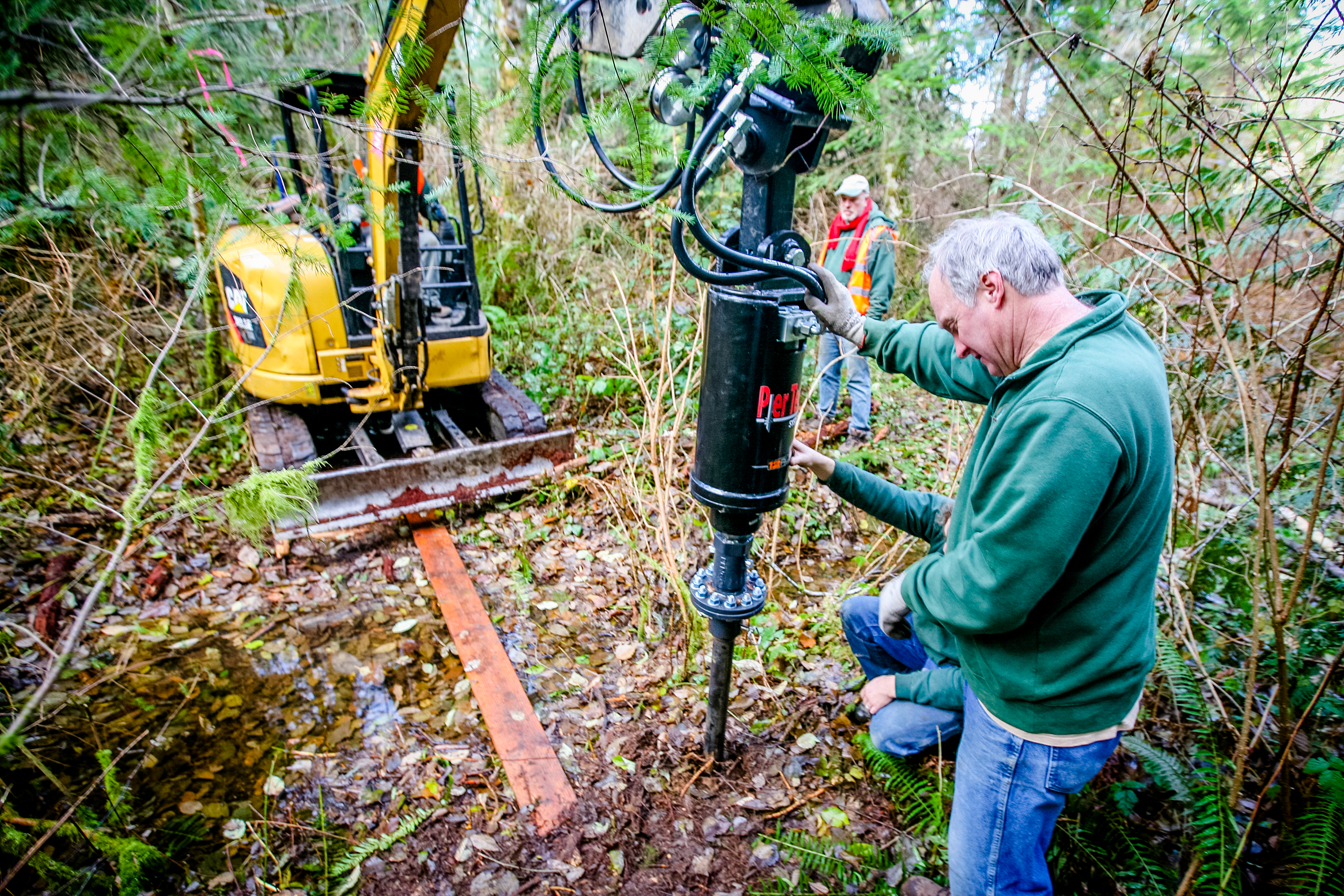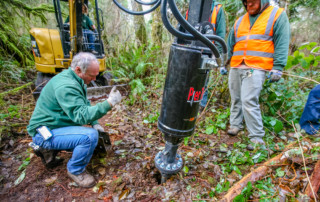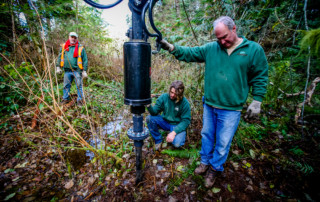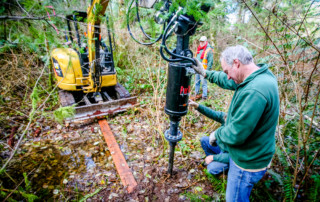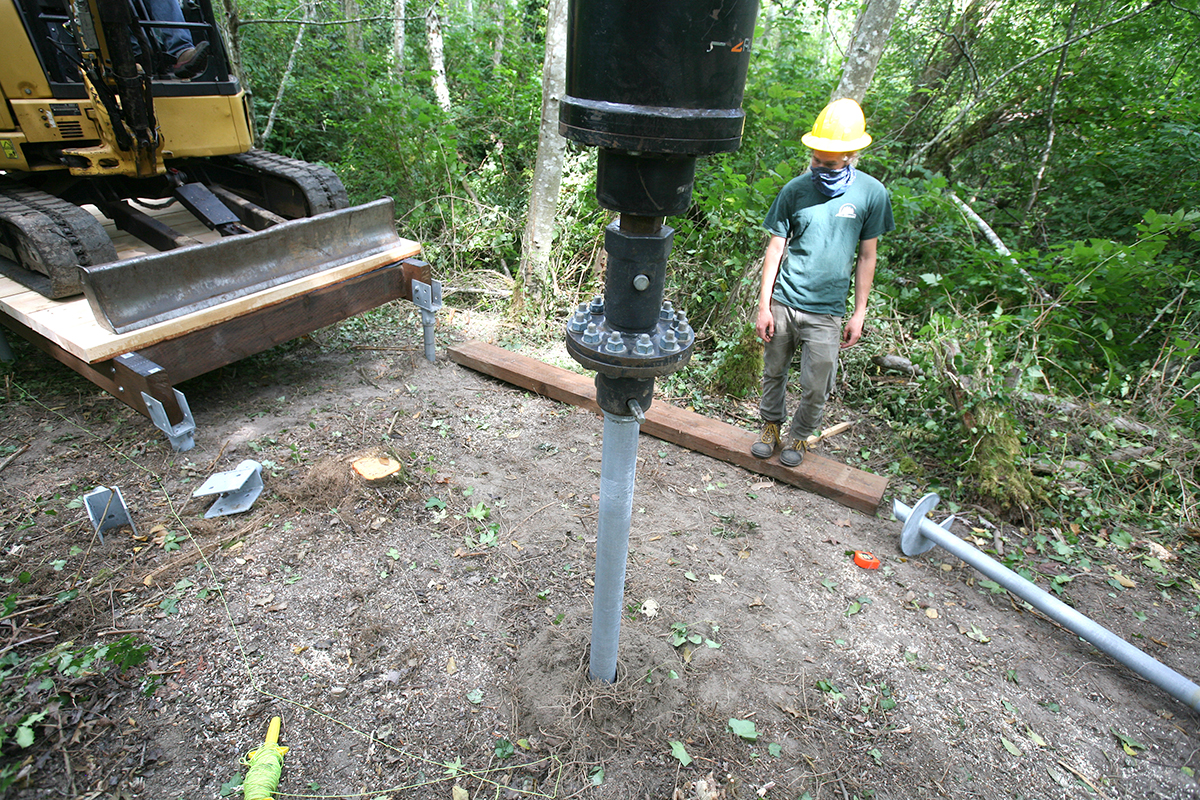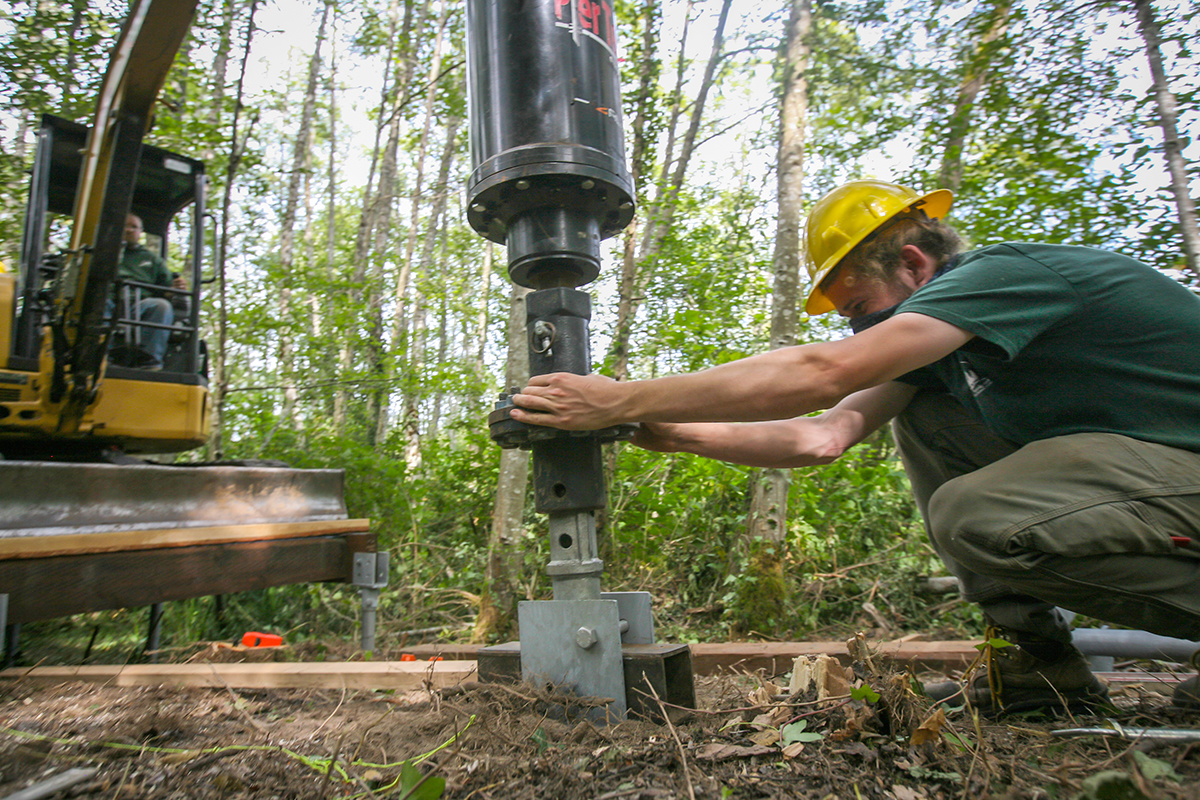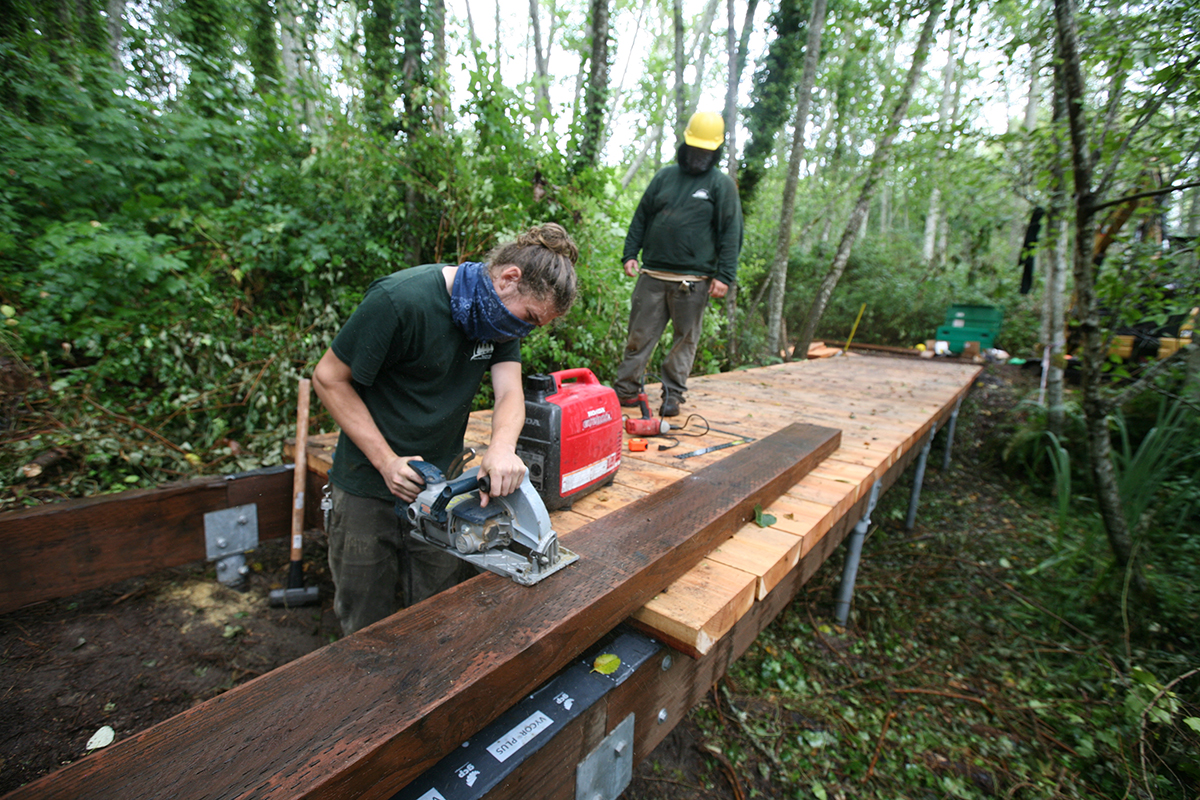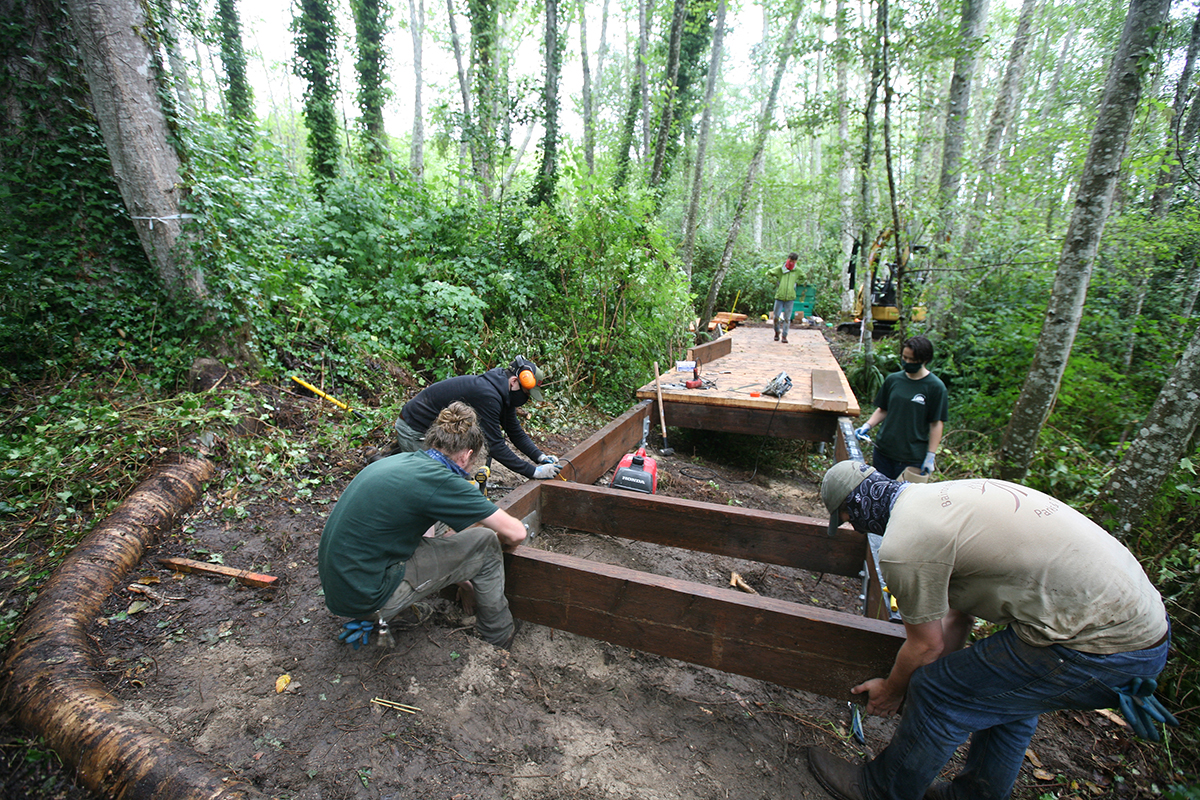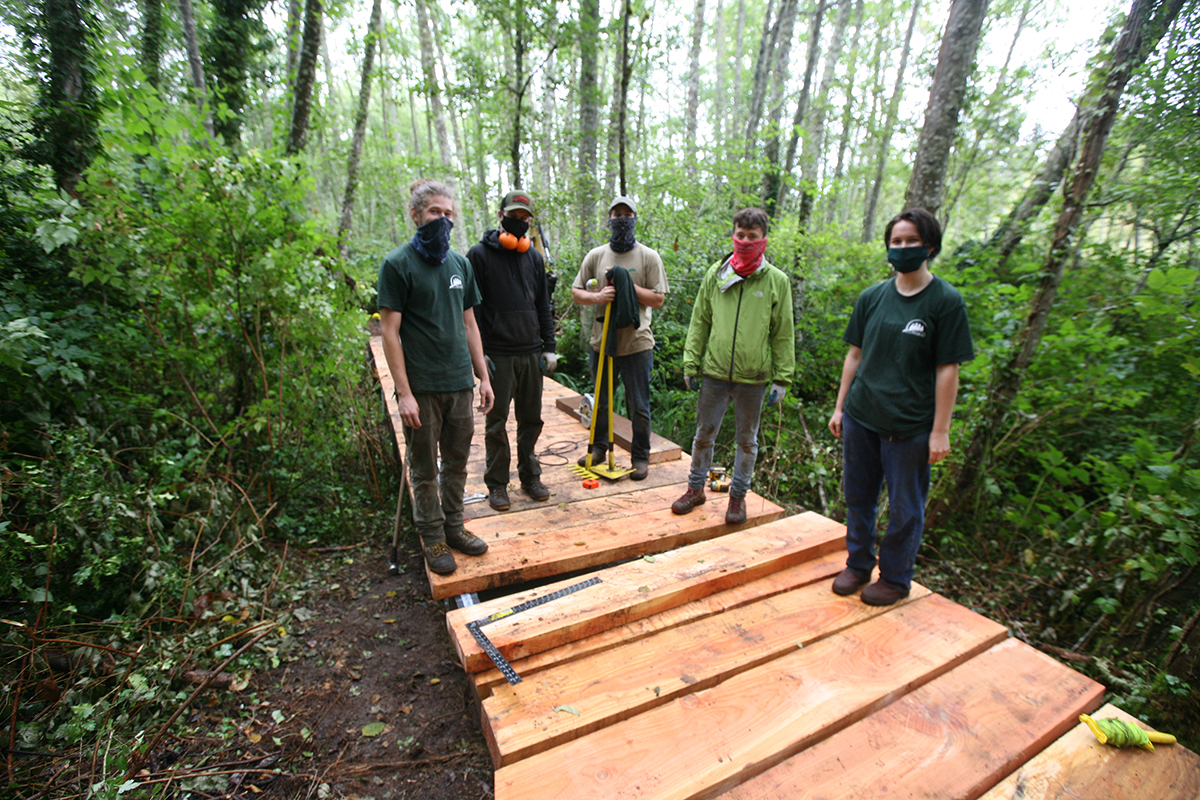Putting a boardwalk across a wetland or stream poses an environmental challenge: How do you anchor the structure without damaging the sensitive area you’re trying to protect in the first place?
A new helical-pier system being used by the Bainbridge Park District promises more boardwalks with much less impact. The equipment, by Missouri-based PierTech Systems, was purchased recently with support from the Bainbridge Island Parks Foundation.
It works like this: The hydraulic head unit – essentially a big drill – attaches to the arm of a typical excavator, and threads steel piers, or “screwpiles,” into the earth to a secure depth. Each pier is then capped with a brace, to which the boardwalk’s crossbeams are attached. The system offers two advantages: Very little soil is disturbed in anchoring each pier, and work can be confined to the width of the path itself.
“You set the pilings, lay beams, then drive out to the end of the boardwalk and do it again,” says Dan Hamlin, Park Services Director for the Bainbridge Island Park District. “You never leave the trail, which is something we pride ourselves on when building trails. The impact and soil compaction are all in the trail tread, where people are going to be walking anyway.”
This “anchor auger” system made its debut in December on the new Old Mill-to-Blakely trail, where a seasonal stream required construction of a small footbridge. Using just four, 4-foot piles, a Parks work crew buttressed the beams needed for a sturdy 16-foot span.
“It went fast,” says David Harry, Park Services supervisor. “I was pleased that it wasn’t terribly technical. A tape measure and a 4-foot construction level was all we needed.”
Next up: Hawley Cove
The next test will be much more ambitious: a 130-foot boardwalk and viewing platform at Hawley Cove Park near the ferry terminal. The boardwalk will connect the parking area to a distant berm, improving park access for pedestrians and the mobility-challenged.
The Parks Foundation recently completed fundraising for the $20,000 boardwalk, with construction planned for later this year. Contributions came from neighbors and park users, with two capstone donations from the developers of the nearby Bainbridge Landing, Sound West Group and Olympic Property Group, a Pope Resources Company, and also from the island firm Wenzlau Architects.
“This is a great opportunity to make Hawley Cove Park more user friendly, and create a new pedestrian link between Wing Point neighborhoods and the ferry terminal,” says Barb Trafton, Parks Foundation executive director. “Nearby residents really responded to the campaign, and others who will enjoy this beautiful waterfront park as well.”
New boardwalks over sensitive areas at Meigs Park and Winslow’s Sakai property are in the planning stage. Minimizing construction impact to trail-side buffers means easier permitting and less mitigation, says Perry Barrett, the Park District’s senior planner.
The best anchoring technique the Park District had come up with previously was a “pin pile” system, in which heavy concrete blocks were lugged into place and staked to the ground with long spikes – arduous and intrusive work. The blocks were expensive, and came with an environmental toll as well.
“You could build across just about anything,” Hamlin says, “but when we put them in we realized we were destroying a lot of vegetation, or at least compacting it. The vegetation would come back, but the aesthetics were pretty bad.”
By contrast, the helical pile system impacts an area about the diameter of the anchor bit itself: just under 3 inches. The hole backfills itself as the auger bores deeper into the ground, leaving each pier firmly affixed and distributing the boardwalk load.
Park officials saw the system demonstrated at a recent National Trail Builders Association conference. It was said to be popular along the Atlantic Seaboard, where marshes and wetlands are a common challenge on public lands. The system is also used for bulkheads and foundations for shoreline homes.
The Parks Foundation stepped up with a $10,000 grant to purchase the machine and a first set of anchors. The grant was supported by Bainbridge Rotary and private contributions.
“Our park users won’t necessarily see how the piers for these new boardwalks and footbridges are installed,” Trafton says, “and that’s the point. Once the work is done, there’s really no trace. The Parks Foundation is pleased to support this environmentally sound means of building boardwalks
Testing the anchor-auger at the Old Mill Trail
Building boardwalks at Sakai Park
Hawley Cove Boardwalk




